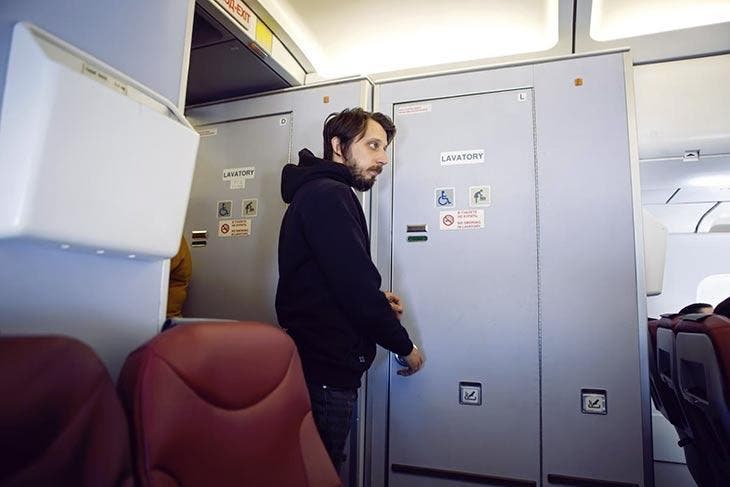
On board the plane, if there is something that often tickles our curiosity, it is the toilet. A real mystery, say the passengers in chorus. So many questions cross our minds: where can the droppings be evacuated when we are several thousand meters above sea level and there is no sewage system nearby? And why is the toilet flush so noisy? The answer is simple: because of the vacuum and lack of water. You think that this device is not at all the same as that of the house. The flow is completely different. While a conventional flush consumes about 9 liters of water (or nearly 36 liters per day / pers), it is clear that this type of rinsing is impossible in airplanes. You would have to transport tons of water! Not only would it cost far too much, but it would also take up a lot of space and consume more kerosene.
To overcome this problem, aeronautical engineer James Kemper devised an ingenious alternative: a vacuum system. Since the 80s, this option, which reduces water consumption to 90%, has been used in all commercial aircraft. How does it work? The toilet is emptied by a strong suction. That’s why you hear this funny deafening noise. In its portal, the German airline Lufthansa gives more details: “A valve opens and the contents of the bowl are immediately sucked in by negative pressure, a bit like a vacuum cleaner.” Therefore, just after pressing the flush button, the low pressure produces a loud noise, but it lasts only two to three seconds.
Where does the feces end up from the toilets on board?
Another recurring question: what is the evacuation system for urine and feces? Be aware that there is also a well-crafted process to deport them. Once the flush is fired, this residue ends up in a collection tank in the fuselage. You are really curious and you want to know more about this journey? Be aware that a mixture of water and anti-rot chemicals (in small quantities) are used to detach the sticky substances from the Teflon bowl and ensure transport to these famous blue tanks. And of course, it is only after landing that these tanks end up being emptied using special vehicles. Fascinating, isn’t it?
When can I use the toilet on the plane?

You are a little more enlightened on the overall process of how the toilet works on the plane. Okay now, you’d mostly like to know why you can’t use them whenever you want, right? You probably think that there is no harm in going to pee, before the plane takes off or even on landing. Very bad idea, you see. You could even block the plane itself! The American newspaper “Milwaukee Journal Sentinel” reported an astonishing anecdote: at Delta Airlines, passengers were even ejected from the plane because they had relieved themselves shortly before takeoff. Unbelievable but true!
It turns out that take-off and landing are the most sensitive moments of the flight. No wonder the flight attendants ask you to turn off your electronics, raise the seat, fasten your seat belt or fold up the small table. Same principle for the use of toilets. It is strictly forbidden to have access to it, or even to walk in the corridor. Better than that: The American website “Bussines Insider” revealed that flight attendants were required to inform pilots immediately when a passenger was still locked in the toilet at that time. And while this traveler relieves himself quietly carefreely, there is panic in the cockpit! Pilots must immediately interrupt their preparations for take-off or landing. Result of the races: this can cause long delays and cause inconvenience to other passengers. Therefore, it is better to follow these strict rules and only go to the toilet when the belt signal is turned off, including during boarding. Again, all of these precautions are only applied for your own safety and that of other travelers.





